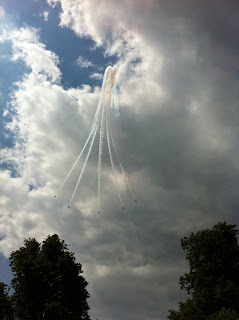
As the summer has now passed, I feel it can be summarised as alot of good progress in my PPL training. Flying around eight times in August without the weather cancelling any of them ( I will pay for that come winter!) and seeing the Spitfire on many occasions-superb.
I am now well into the navigation phase of the PPL syllabus, with many trips planned for the upcoming months. My first taster was the flyout to Duxford, although not a typical PPL navigation lesson, it was a good opportunity to work with the autopilot.
So far we have covered radio navigation using VOR stations ( VHF Omni-directional Range) which are basically large compasses on the ground with 360 degree segments (bearings ) and you would fly these bearings to or from a VOR station whilst enroute to a destination. A VOR display in the aircraft will show the pilot if he/she is accurately following this bearing and if flying towards or away from the station. I'm sure you would appreciate that this is a very basic description of these radio stations and so have left out alot of the more technical knowledge!

No thats not the plane I fly! Just an illustration of low level flying. Picture courtesy of Chris, one amazing talented amateur photographer
Click here to see more of his work https://picasaweb.google.com/100603098187399900823
We have also covered low level flying and low level (bad weather) circuits. As a comparison I normally fly at 1200ft in the circuit and around 2-3000ft when flying in the local area. Low level flying takes place at around 800ft with 10 degrees of flap ( to give a better forward view) and 80 knots airspeed, and yes, the view is pretty decent when your that low-scudding over the terrain. Its great fun, especially in the circuit where you seem to be airborne literally for 2 minutes. Things happen very fast, so unsurprisingly I found it quite demanding.
Why do we fly low level? Weather. If the weather deteriorated very suddendly and the cloud base lowered to around 1000ft a low level circuit would be necessary to assess the landing area and get down to terra firma promptly and into the flying school clubhouse for tea and cakes!




































